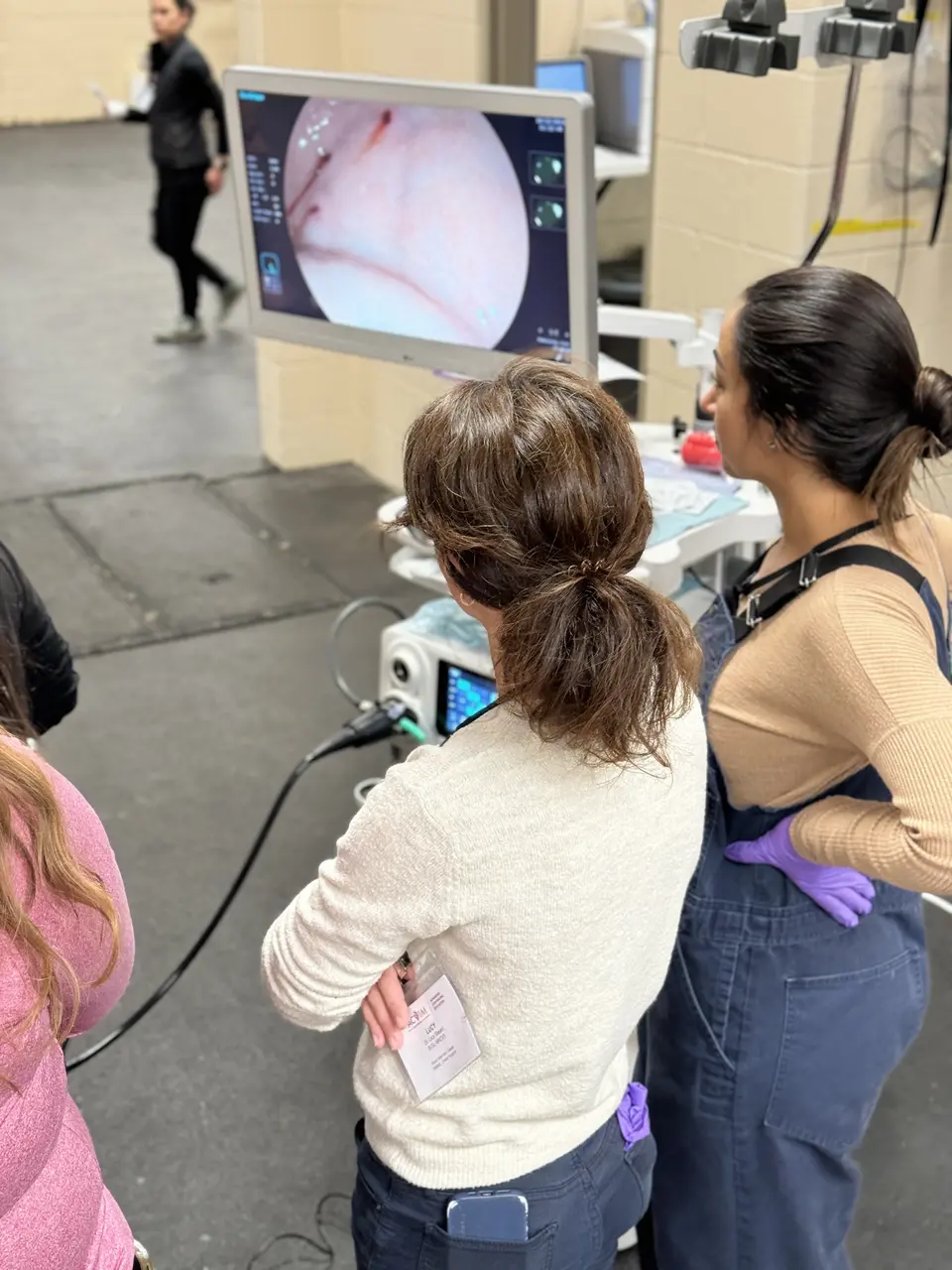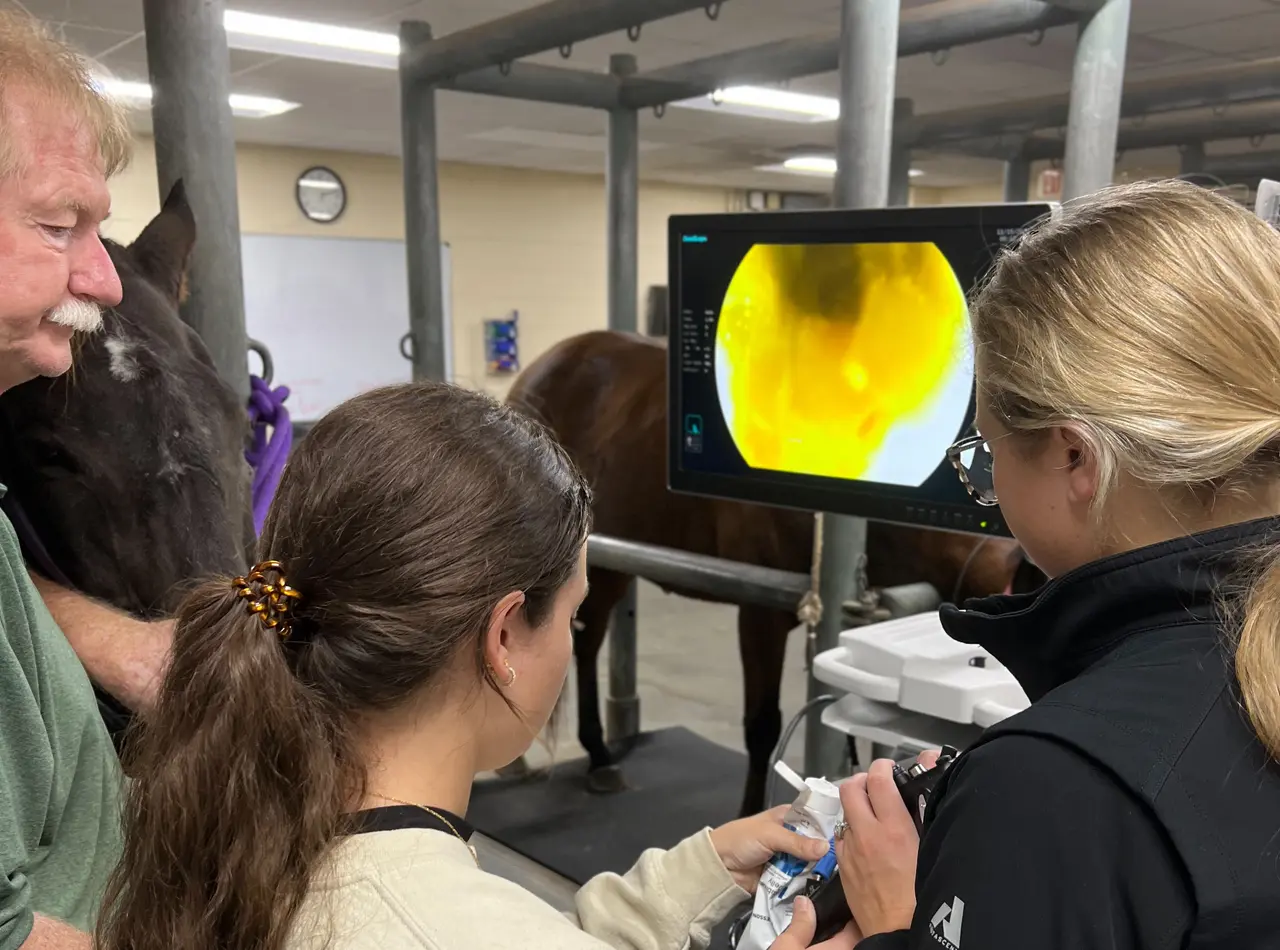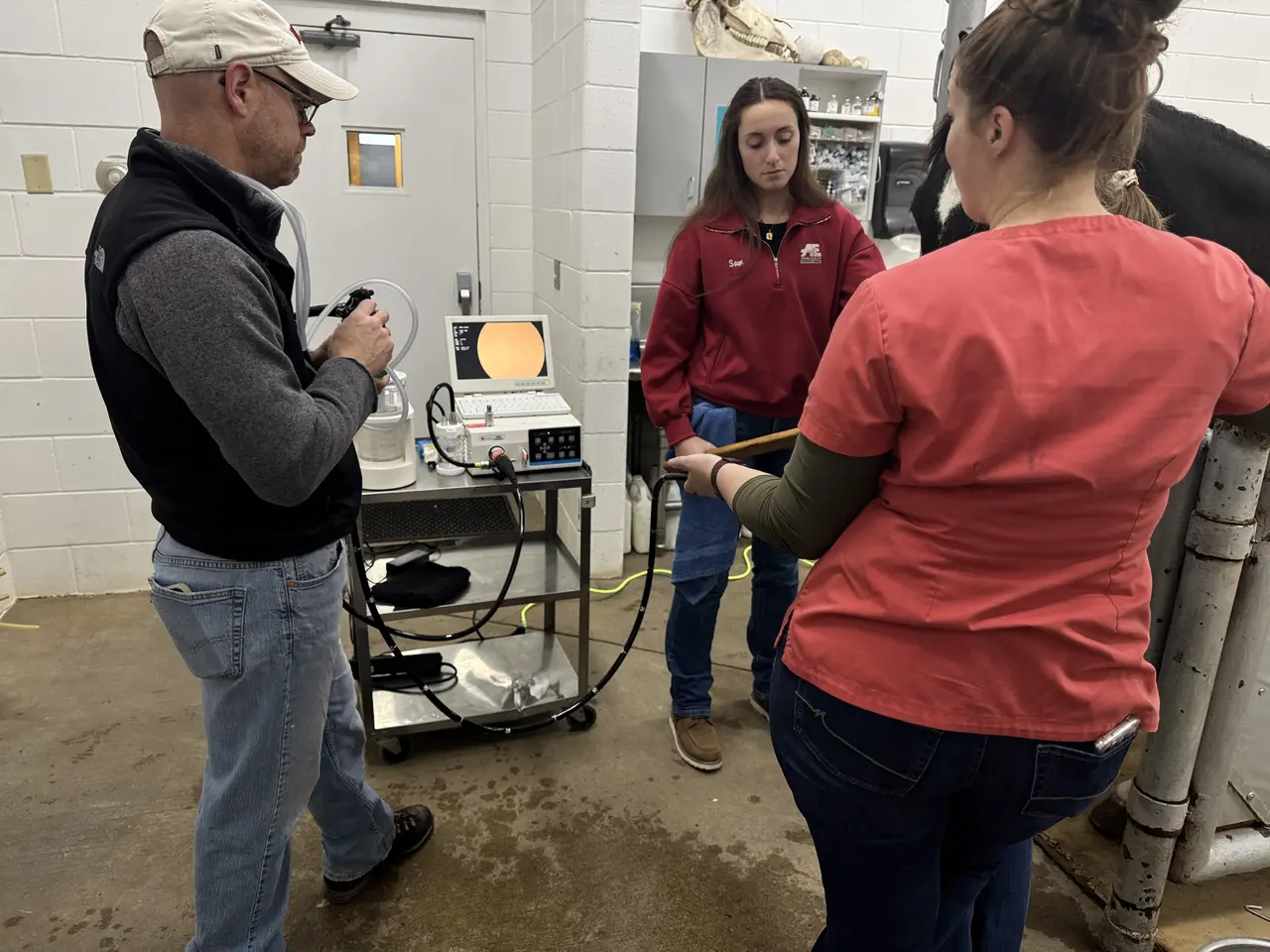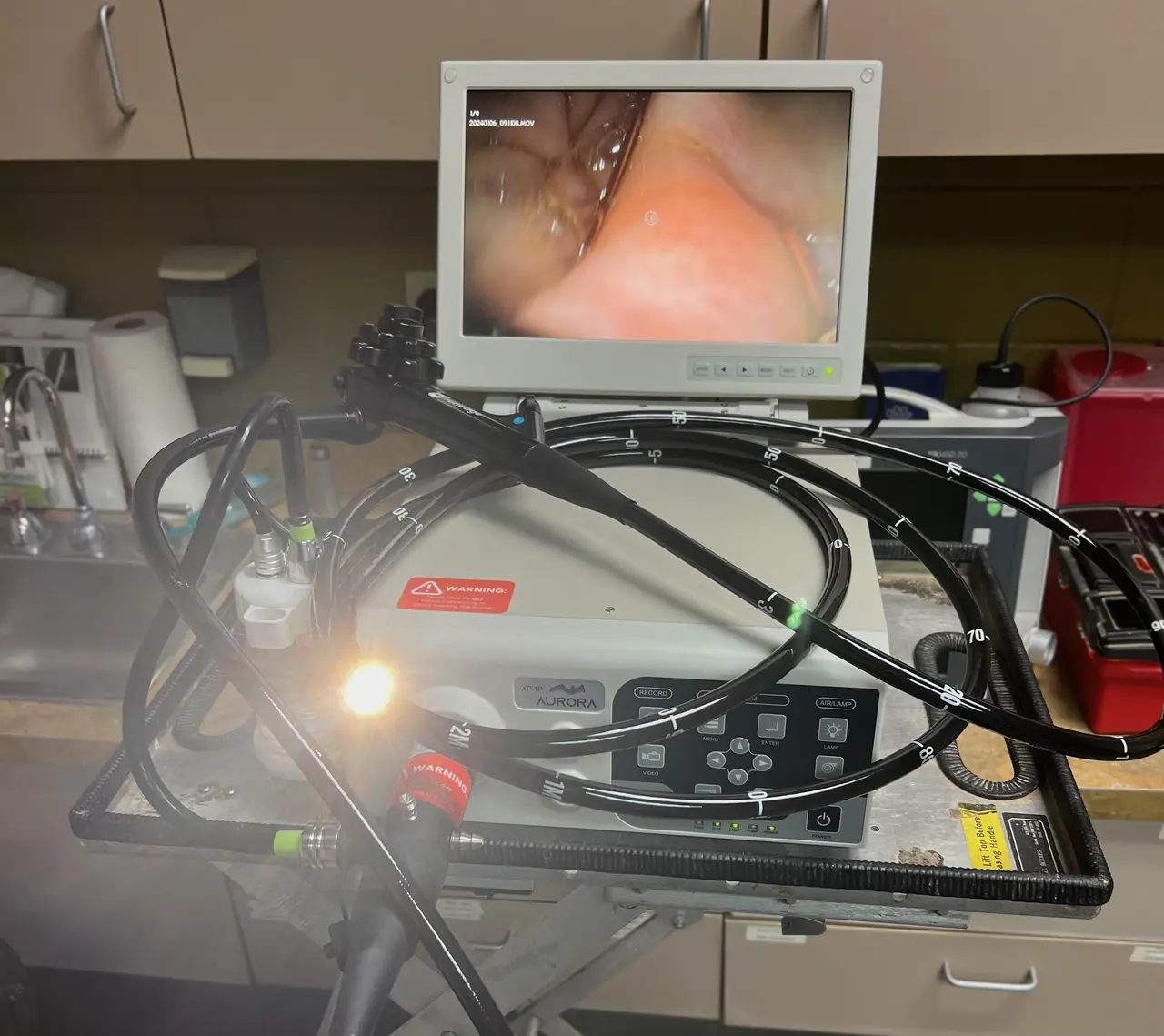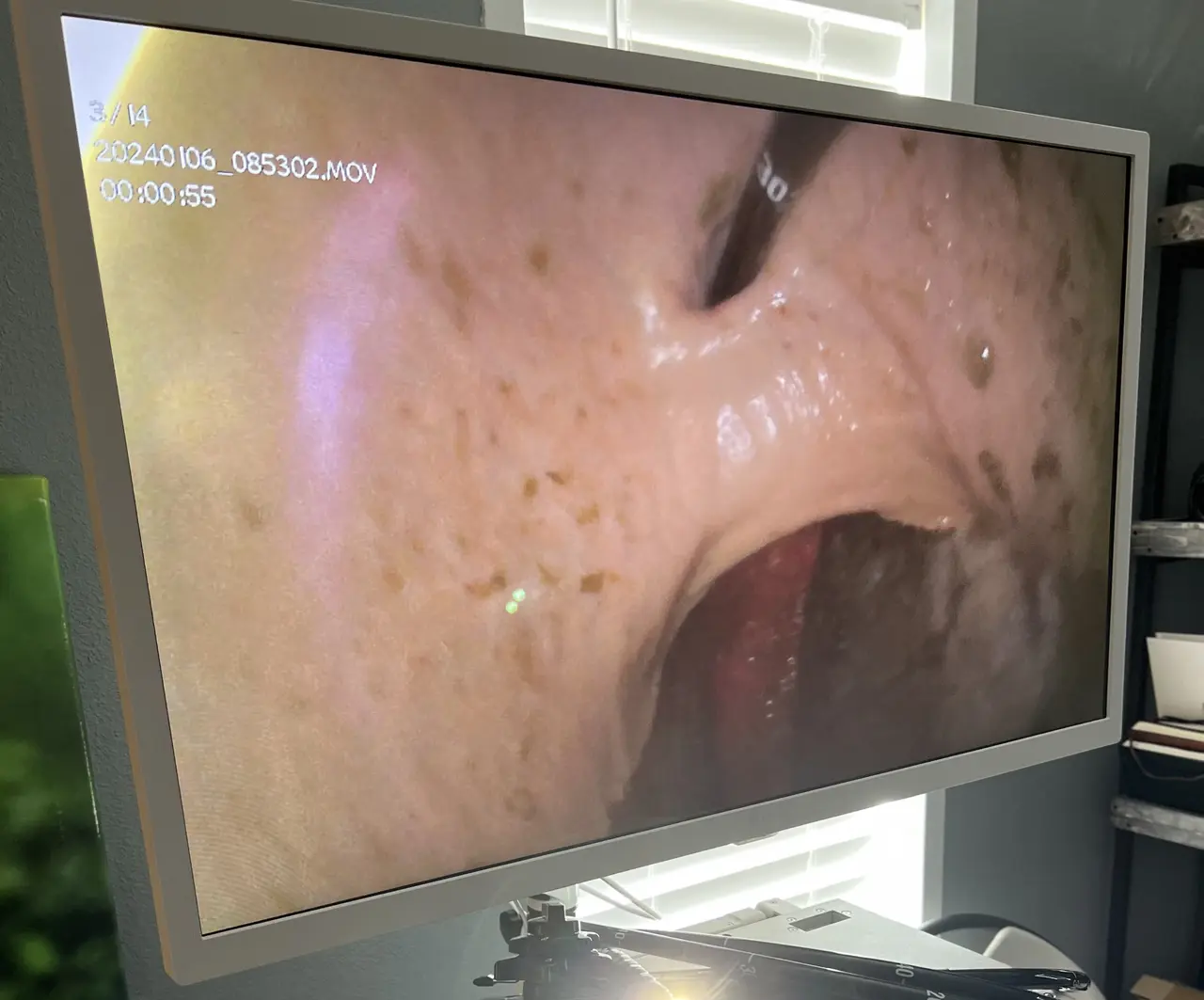Equine gastric ulcer disease is a significant health issue affecting horses worldwide, causing discomfort and affecting their performance and well-being. Equine gastroscopy has emerged as a gold standard in diagnosing and managing this condition, allowing veterinarians to see inside the horse’s stomach and tailor treatment plans accordingly. In this blog, we’ll explore how equine gastroscopy works, its importance, and what horse owners can expect from this procedure.
What is Equine Gastroscopy?
Equine gastroscopy is a diagnostic procedure that uses a special instrument called a gastroscope. This flexible tube is equipped with a camera and light, allowing veterinarians to view the inside of a horse’s stomach and diagnose gastric ulcers accurately. The procedure is invaluable in identifying the location and severity of ulcers, thus aiding in crafting precise treatment plans. Gastric ulcers, which are sores on the stomach lining, can be caused by several factors including stress, diet, and certain medications Equine Gastric Ulcer Syndrome. The gastroscope offers a direct and unobstructed view of these areas, facilitating a comprehensive assessment.
The need for such precision arises from the fact that horses, unlike humans, produce stomach acid continuously, which can lead to the development of ulcers if not managed properly Equine Gastric Ulcer Syndrome: An Update on Current Knowledge. This continuous acid production means that even subtle changes in a horse’s feeding schedule or environment can have significant impacts on stomach health. Without accurate diagnostic tools like the gastroscope, it could be challenging to determine the exact nature of gastrointestinal issues, which is why gastroscopy is regarded as a golden standard in equine veterinary care.
The Procedure: What to Expect
Preparing a horse for gastroscopy involves several steps, including fasting the horse for a certain period before the procedure. This fasting ensures that the stomach is sufficiently empty, providing the veterinarian a clear view to diagnose any potential ulcers. Typically, horses are starved for about 12 hours prior to the procedure Guide to Equine Gastroscopy. In addition to fasting, water is withheld for about 2-3 hours to avoid any interference during the examination.
During the procedure, a trained professional inserts the gastroscope through the horse’s nostril, down the esophagus, and into the stomach to examine the gastric lining. The horse is usually sedated to ensure it remains calm throughout the process, which is pivotal for an accurate and thorough examination. The gastroscope is maneuvered by skilled veterinarians to inspect various parts of the stomach, paying close attention to sections commonly affected by ulcers.
The sophistication of the gastroscope allows for an evaluation that is not merely visual but also interactive, where air and water can be passed through the scope to better navigate and visualize the stomach walls. This level of detailed inspection enables the veterinarian to assess the presence and severity of ulcers accurately, making it easier to recommend an appropriate treatment course.
Why Gastroscopy is the Gold Standard
Unlike other diagnostic methods, gastroscopy provides a direct visual assessment of the stomach. This allows for a definitive diagnosis of gastric ulcers, their severity, and precise location, which is crucial for effective treatment planning. The precision of a gastroscopic evaluation ensures that no detail is overlooked, providing a comprehensive picture of the horse’s gastric health. Many other diagnostic tools rely on symptomatic evaluation or indirect visualization, which can sometimes lead to incomplete or inaccurate assessments.
Gastroscopy also plays an essential role in distinguishing between different types of gastric mucosal diseases, which is vital for targeting the specific ulcer type and its underlying cause Equine Gastric Ulcer Syndrome: An Update on Current Knowledge. For instance, Equine Squamous Gastric Disease (ESGD) and Equine Glandular Gastric Disease (EGGD) both fall under the umbrella of gastric ulcers. Each of these conditions affects different layers of the stomach lining and may require tailored treatment strategies. Understanding whether a horse is experiencing ESGD or EGGD enables targeted therapy, thereby improving the chances of successful healing and reducing the likelihood of recurrence.
Therefore, equine gastroscopy has not only improved diagnostic accuracy but has also enhanced the understanding of gastric conditions within the equine medical field, facilitating better health outcomes for our equine companions.
Post-Procedure Care and Treatment
After a gastroscopy, veterinarians will discuss the findings and recommend a treatment plan. This may include dietary changes, medications, and follow-up care tailored to the specific needs of the horse. The introduction of dietary changes typically involves increasing the frequency of feeding and incorporating roughage to buffer stomach acids. The use of medications, such as omeprazole, is a common course for reducing acid production and allowing ulcers to heal Diagnosing Equine Gastric Ulcers.
Proper post-procedure care is essential for optimal recovery and management. Owners may be advised to minimize stressful conditions for their horses, such as intense training sessions or long transports, as these can exacerbate ulceration. Monitoring the horse’s behavior and dietary intake closely can provide insights into the healing process. Vet consultations may also include a follow-up gastroscopy to assess healing progress and make any necessary adjustments to the treatment plan.
Taking these steps ensures that the horse not only recovers efficiently but also reduces the risk of ulcer recurrence in the future. With proper management, many horses return to full health, ready to perform at their best.
Understanding the Importance of Equine Gastroscopy
Equine gastroscopy is a vital tool in diagnosing and managing gastric ulcer disease, offering a clear view into the health of a horse’s stomach. By understanding the procedure and its benefits, horse owners can ensure timely and effective treatment for their equine companions, promoting better health and longevity. If you suspect your horse may be suffering from gastric ulcers, consulting with your veterinarian about gastroscopy could be a crucial step in their healthcare journey.

